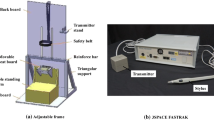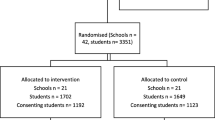Abstract
About 326 elementary school boys and 299 elementary school girls of an age ranging from 6 to 13 are included in this flat foot prevalence study. Results of the study are categorized in three groups, namely city centers, rural areas and suburbs. For the assessment of flat foot, footprint test is used. Prevalence of flat foot was 35.5% among girls and 28.5% among boys. Flat foot was associated with child age, residency and body mass index (BMI). Flat foot prevalence was highest among 6-year-old children, and lowest among 11-year and older children (P < 0.05). Flat foot prevalence was lower among children living in rural areas and children with low BMI value (P = 0.001). More overweight and at risk of overweight children had flat foot compared to normal and underweight children (P < 0.05). Familial predisposition was also noted for flat foot; 16.1% of children with flat foot had a familial history of flat foot, while this rate was only 5.6% in families of healthy subjects (P = 0.001).




Similar content being viewed by others
References
Tachdjian MO (1997) Clinical pediatric orthopedics. Appleton and Lange, Stanford, pp 24–25
Lee MS, Vanore JV, Thomas JL, Catanzariti AR, Kogler G, Kravitz SR, Miller SJ, Gassen SC (2005) Diagnosis and treatment of adult flatfoot. J Foot Ankle Surg 44(2):78–113
Chen MJL, Chen CPC, Lew HL, Hsieh WC, Yang WP, Tang SFT (2003) Measurement of forefoot varus angle by laser technology in people with flexible flatfoot. Am J Phys Med Rehabil 82(11):842–846
Echarri JJ, Forriol F (2003) The development in footprint morphology in 1851 congolese children from urban and rural areas, and the relationship between this and wearing shoes. J Pediatr Orthop B 12(2):141–146
Lin CJ, Lai KA, Kuan TS, Chou YL (2001) Correlating factors and clinical significance of flexible flatfoot in preschool children. J Pediatr Orthop 21(3):378–382
Pfeiffer M, Kotz R, Ledl T, Hauser G, Sluga M (2006) Prevalence of flat foot in preschool-aged children. Pediatrics 118(2):634–639
Centers for Disease Control and Prevention. Individual grow charts. Available at URL: http://www.cdc.gov/growthcharts/charts.htm. 17.09.2009
Rao UB, Joseph B (1992) The influence of footwear on the prevalence of flat foot. A survey of 2300 children. J Bone Joint Surg Br 74(4):525–527
Sachithanandam V, Joseph B (1995) The influence of footwear on the prevalence of flat foot. A survey of 1846 skeletally mature persons. J Bone Joint Surg Br 77(2):254–257
Bordin D, De Giorgi G, Mazzocco G, Rigon F (2001) Flat and cavus foot, indexes of obesity and overweight in a population of primary–school children. Minerva Pediatr 53(1):7–13
Garcia-Rodriguez A, Martin-Jimenez F, Carnero-Varo M, Gomez-Gracia E, Gomez-Aracena J, Fernandez-Crehuet J (1999) Flexible flat feet in children: a real problem? Pediatrics 103(6):e84
Buerk AA, Albert MC (2001) Advances in pediatric foot and ankle treatment. Curr Opin Orthop 12(6):437–442
Igbigbi PS, Msamati BC, Shariff MB (2005) Arch index as a predictor of pes planus: a comparative study of indigenous Kenyans and Tanzanians. J Am Podiatr Med Assoc 95(3):273–276
Sari Z, Otman AS, Akman MN (1995) Çocuklarda görülen ayak deformitelerinin heredite ile ilişkisi. J Turgut Özal Med Cent 2(2):160–165
Acknowledgments
We thank to Dr. Hulya TASKAPAN and Dr. Kadir ERTEM for their contribution in writing the paper.
Conflict of interest
No funds were received in support of this study.
Author information
Authors and Affiliations
Corresponding author
Rights and permissions
About this article
Cite this article
Cetin, A., Sevil, S., Karaoglu, L. et al. Prevalence of flat foot among elementary school students, in rural and urban areas and at suburbs in Anatolia. Eur J Orthop Surg Traumatol 21, 327–331 (2011). https://doi.org/10.1007/s00590-010-0717-2
Received:
Accepted:
Published:
Issue Date:
DOI: https://doi.org/10.1007/s00590-010-0717-2




